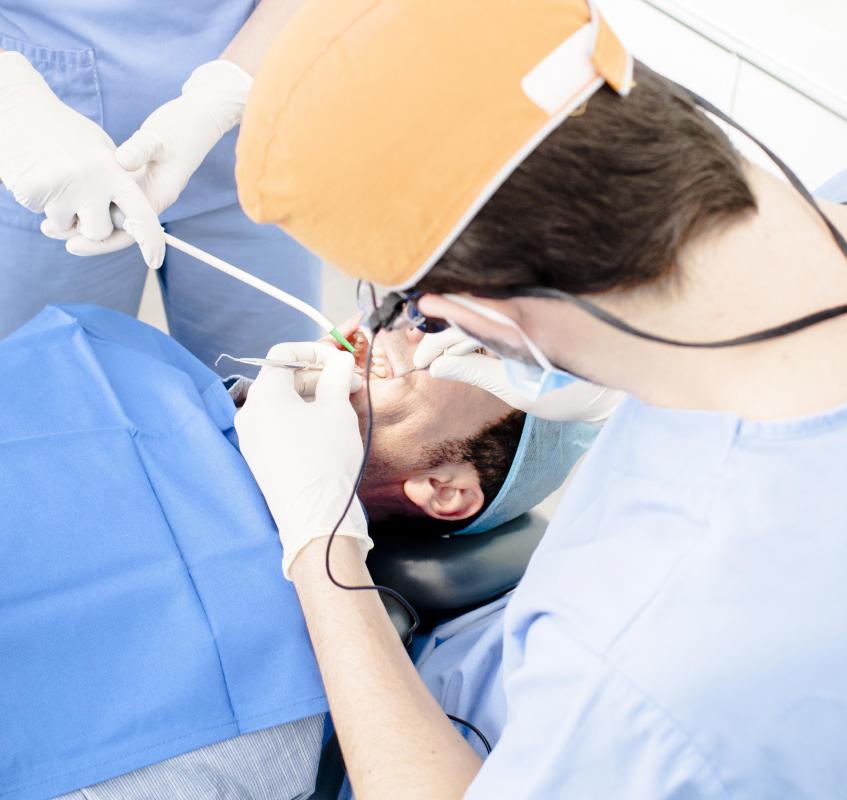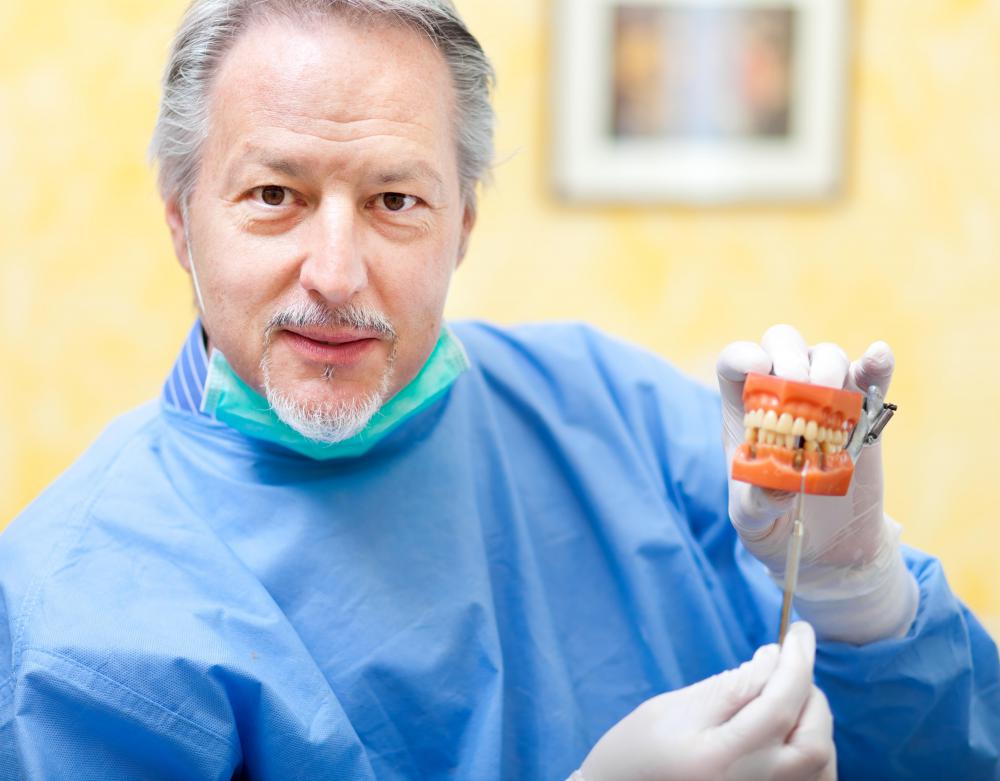At TheHealthBoard, we're committed to delivering accurate, trustworthy information. Our expert-authored content is rigorously fact-checked and sourced from credible authorities. Discover how we uphold the highest standards in providing you with reliable knowledge.
What is Guided Tissue Regeneration?
Guided tissue regeneration (GTR) is a surgical procedure utilized by dentists to promote the new growth of tissue in areas of the jaw which have been damaged by gum disease. It is often done together with guided bone regeneration, a procedure that's focused on regrowing bone in damaged areas. Both of these procedures are usually used to stabilize endangered teeth or to prepare an area of the jaw for dental implants. The surgery is invasive, and it is important to seek out a dental surgeon who has experience with the procedure and a good track record with patients.
Over the course of gum disease, small pockets can develop in the bones of the jaw as the jaw is eaten away by disease. These pockets can promote the spread of infection, and they also destabilize teeth. Once gum disease is under control, a dentist may recommend addressing these pockets with guided tissue regeneration, whether the goal is to save existing teeth or to prepare the jaw for dental implants to replace teeth which are going to be extracted, or have already been extracted.

In the surgery, a dentist exposes the area of concern, carefully cleans it, and installs a membrane between the soft tissue and the pocket in the bone. This membrane keeps fast-growing soft tissue out of the pocket so that slow-growing bone has a chance to grow and fill it in. Some membranes need to be removed later, while others will be absorbed into the body if left in place. The progress of the guided tissue regeneration can be monitored with periodic X-rays to check on the growth of new bone and confirm that the growth is proceeding as expected.

While new bone is growing, the patient may need to follow a rigorous regimen which includes very careful oral care and proper nutrition. The dentist will make recommendations on the basis of the location of the guided tissue regeneration, the patient's history, and the patient's specific needs. When the guided tissue regeneration procedure is recommended, a dentist usually asks the patient if he or she is willing to commit to the extra care needed. If the patient will not be able to follow through with the aftercare, the procedure may not be as successful.

When a dentist recommends the guided tissue regeneration treatment for periodontal disease, the patient may want to seek a second opinion from another dentist to confirm that it is necessary. Patients should also ask about the dentist's experience with the procedure, and the outcome for patients; a competent dentist should be happy to tell success stories, which can include displays of X-rays showing healing progress in other patients. Patients should also get detailed information about the healing time and aftercare procedures before they commit to the surgery, to make sure that they are really prepared.
AS FEATURED ON:
AS FEATURED ON:

















Discuss this Article
Post your comments